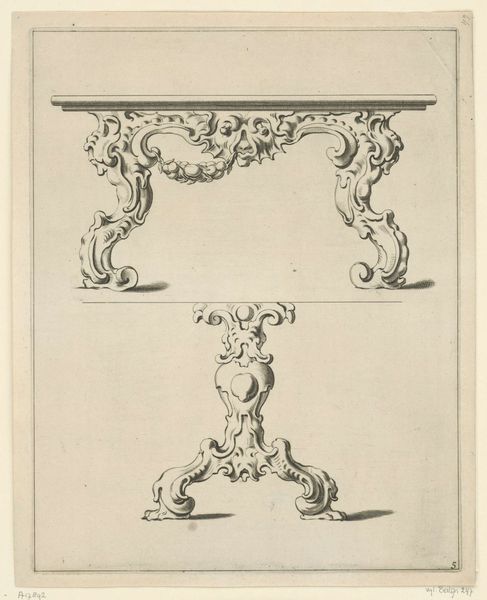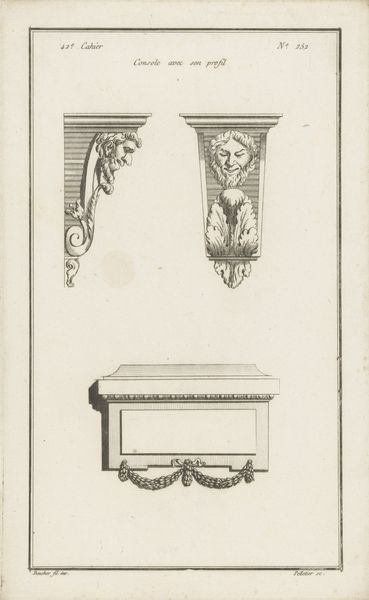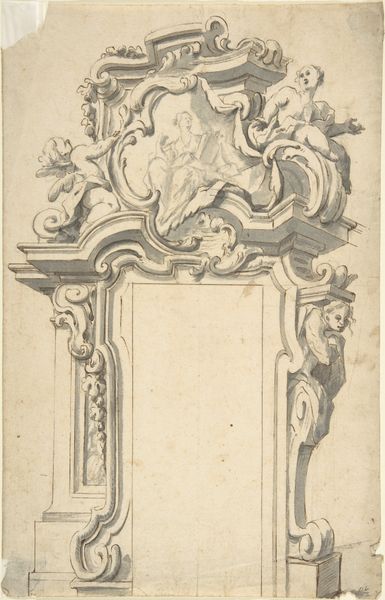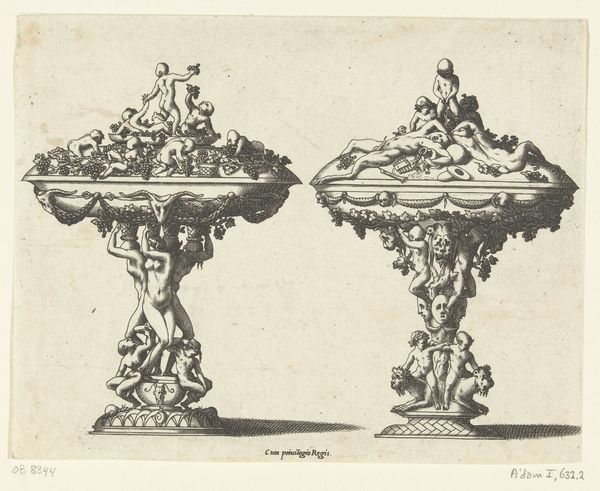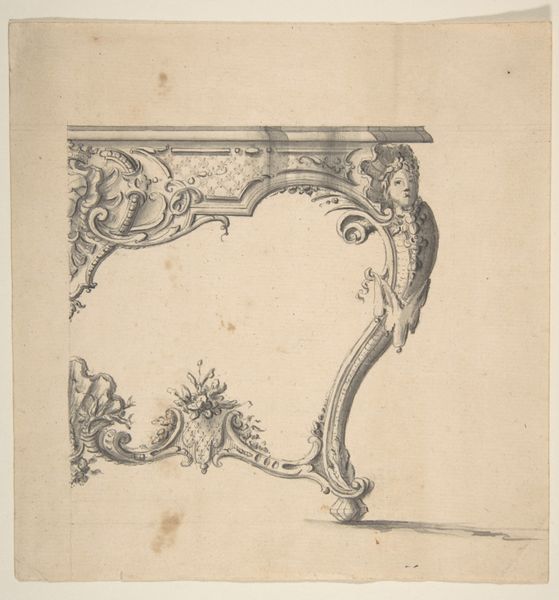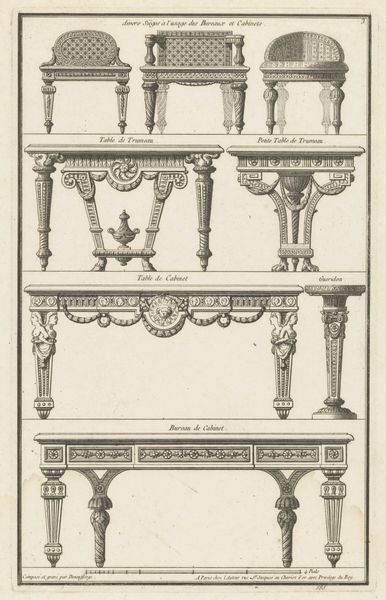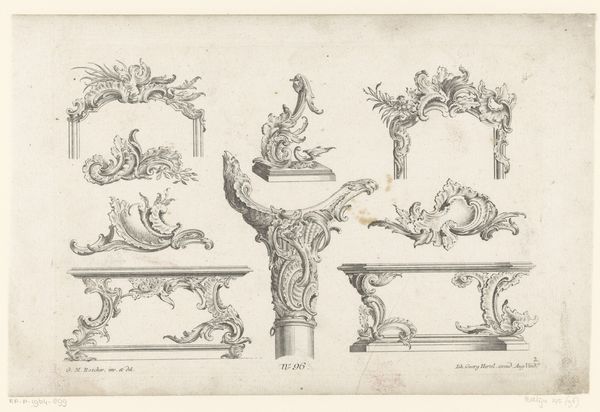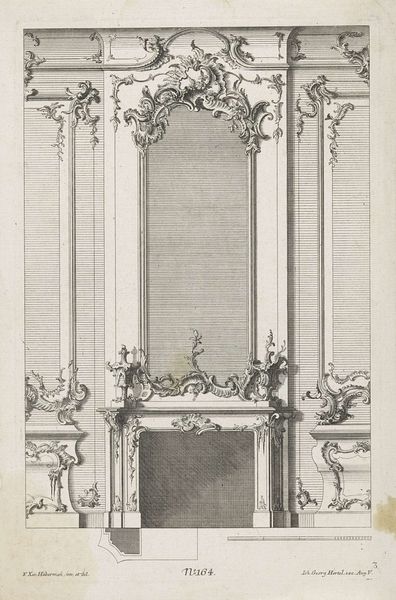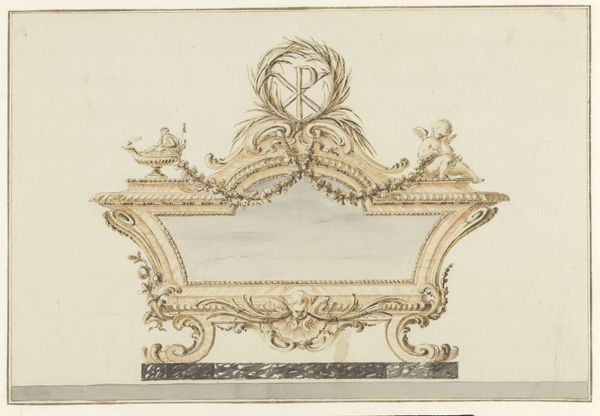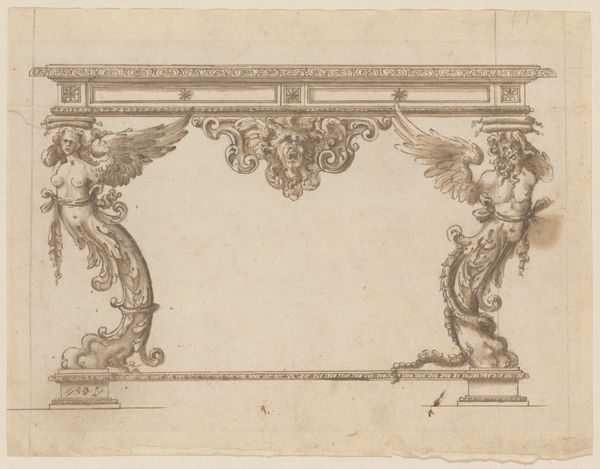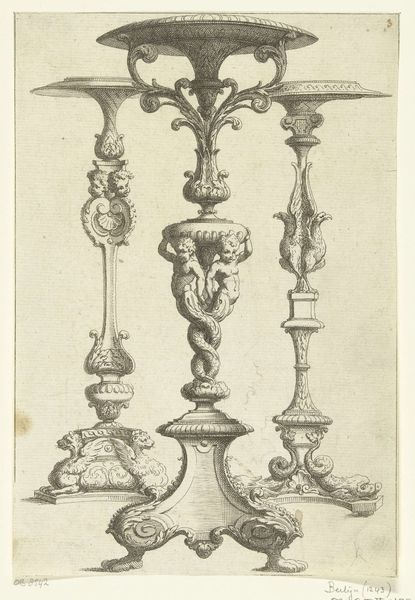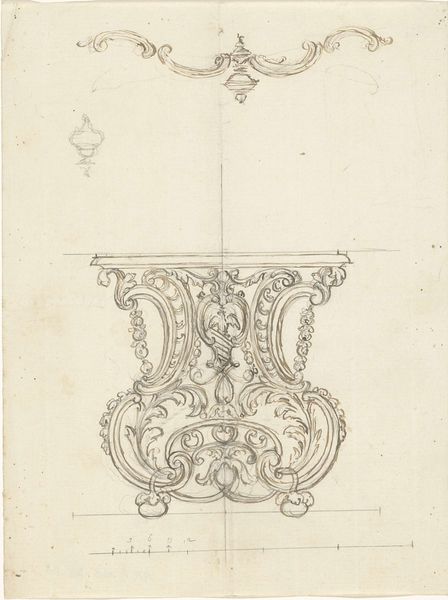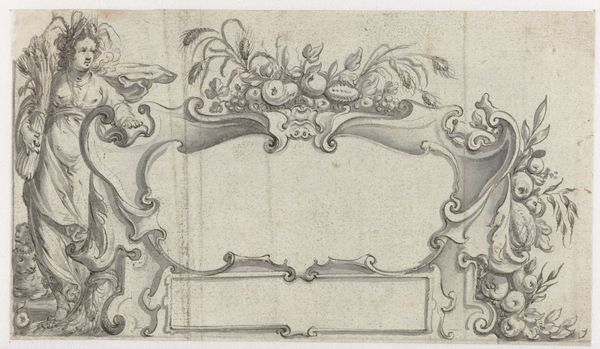
drawing, engraving
#
drawing
#
baroque
#
form
#
line
#
engraving
Dimensions: height 253 mm, width 199 mm
Copyright: Rijks Museum: Open Domain
Editor: Here we have Pieter Hendricksz. Schut's "Two Tables," an engraving from 1655 held at the Rijksmuseum. What strikes me are the rather bizarre legs – they look like monstrous, fleshy figures contorted to hold up the table top. It’s quite unsettling. What do you make of this piece? Curator: It's a fascinating example of how the decorative arts intertwined with power and status in the Baroque era. These aren’t just functional objects; they're demonstrations of wealth and taste. The grotesque forms you noticed were actually highly fashionable, derived from classical mythology and reinterpreted through a Baroque lens. Think about who commissioned and consumed these images: wealthy patrons, artisans needing patterns. Editor: So, the unsettling nature of the forms might have been a deliberate choice, meant to impress more than comfort? Were such designs common? Curator: Absolutely. Remember that Baroque art often aimed for dramatic impact. Prints like these circulated widely, acting as models for furniture makers and influencing design across Europe. Ask yourself, what did owning such furniture communicate about a person's access to knowledge and resources? These tables become stages for performing status. The monster figures, for example, were fashionable and are symbols of triumph of intellect over primitive forces. Editor: That's really interesting. I hadn't considered the print itself as a commodity being circulated and consumed. Curator: Precisely. These images served a crucial role in disseminating stylistic trends and solidifying social hierarchies. Think of museums now exhibiting and selling the images of art; consider the circle of economy and power. Editor: This makes me rethink the role of design. I used to consider art as painting, sculpting or similar arts. But you showed me how decorative art served power and social hierarchies back then. Curator: It's crucial to see the past artistic expression as part of a big historical ecosystem of social and political statements, not in artistic isolation.
Comments
rijksmuseum about 2 years ago
⋮
This etching and the one next to it are the only two prints with designs for auricular stands published in the Netherlands. Van den Eeckhout, a painter who had trained with Rembrandt, both designed various objects with kwab ornament, and depicted them in his pictures. The tables are too massive to be literally translated into wood.
Join the conversation
Join millions of artists and users on Artera today and experience the ultimate creative platform.
